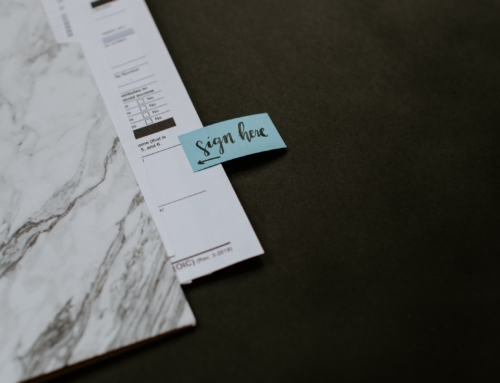As many business owners have heard about a new leasing standard, ASC 842, many of them don’t realize it’s been in effect for almost three years. Now, the original adaption and implementation of the new standard are just right around the corner! What should you know about this new standard if you own a business? This article will help you get familiar with the new leasing standard, or ASC 842.
Background
In the past, under ASC 840 (old standard), as lessee, leases can be classified as either capital leases or operating leases. If it is an operating lease, it’s not required to recognize assets or liabilities. A lessee only needs to book the lease payment on the income statement. The SEC has identified operating leases as one of the accounting loopholes. Many investors have criticized it because companies are trying to restructure the leases and classify them as operating leases to take the equipment and the obligation off the balance sheet, which could be essential for analyzing the company’s operation. To solve this problem, in February 2016, the new leasing standard, ASC 842, was issued by FASB to replace the old standard ASC 840. The new leasing standard improves the transparency and comparability of the financial statements for financial statement users.
Scope
Not everything related to lease is under the scope of the new leasing standard. If you are dealing with a lease refers to the following items, you should look for other accounting standards but not ASC 842: leases of intangible assets, leases to explore for or use minerals, oil, natural gas, and similar nonregenerative resources, leases of biological assets including timber, leases of inventory, and leases of assets under construction. However, it is under the scope of ASC 842 if it’s a lease of equipment that used to explore the non-regenerative resources.
Core principle
Under the new standard, no matter the classification, all leases are required to show the assets and liabilities on the company’s book except for short-term leases. In the past, an identification of a lease seems less critical because if it is an operating lease, it is not required to book assets and liabilities. However, under the new leasing standard, virtually all leases are required to have balance sheet recognition. For lessees, what they used to call as “capital lease” are now called “finance lease” under the new standard. Companies fail to report a lease on the balance sheet is considered a misstatement of financial statements. Most of the time a lease does not have a word “lease” on it, and it usually embedded in a comprehensive contract with other service contract and or providing agreement on it. The company should be able to identify an embedded lease and appropriately record it, but they also don’t want to record a liability if they must. Therefore, identification of a lease becomes the most essential yet challenging part for a company when implementing new leasing standard. It requires a combination of knowledge from the company’s operation, business law and regulation interpretation, and accounting standards.
Measurement
Once the lease classification was determined, the lessee must measure the lease liability and assets. The lease liability was calculated as a present value of expected payment obligations under the lease. The leased asset equaled lease liability but adjusted for certain items, such as prepaid rent, or unamortized initial direct costs. Although classification does not impact an initial lease recognition, it affects how a subsequent lease recognition. A finance lease is like a capital lease under ASC 840. Interest expense will be recognized based on outstanding obligation and use the effective interest rate method.
Additionally, the lease assets are often amortized on straight-line bases. The combination of interest and amortization will typically result in a font loaded expense recognition pattern. Operating leases expense will usually require reflecting a lease liability and assets on its balance sheet. There is a unique process for amortizing operating liability and assets. Interest expense on the outstanding obligation is calculated using the effective interest rate method. So, start with a similar font-loaded expenses recognition pattern as a finance lease. The lease liability would be counted like other interest-bearing obligations: cash paid less interest expense represents a reduction of the burden. Asset amortization, however, is a new concept. It’s calculated as a difference between the lease and interest expenses in the period. In other words, it’s a “plug”. Although the total lease expense for an operating lease economically includes both interest and amortization components, it will be reflected as an operating expense, not as interest or amortization.
Effective date
Public business entities are required to apply the leasing standard for the annual reporting period (including interim periods therein) beginning after December 15, 2018. Certain not-for-profit entities and employee benefit plans that file a financial statement with the SEC are also subject to the transition date applicable to public business entities. All other entities are required to apply the leasing standard for annual periods beginning after December 15, 2019. Early adoption is permitted. For example, if a provider company’s fiscal year-end is December 31, then the implementation date will be January 1, 2020; if the fiscal year-end is May 31, then the implementation date will be June 1, 2020.
Transition Approach
The leasing standard is required to be applied to leases in existence as of the date of adoption using a modified retrospective transition approach. A full retrospective transition approach is not permitted. One example of a modified retrospective approach is that, if a company is adopting the standards on January 1, 2020, with a comparative period starting on January 1, 2019. They would recognize a cumulative-effect adjustment to the opening balance of retained earnings at their adoption date rather than on January 1, 2019. In other words, now companies only must transition to the new standards at the effective time, instead of having to apply the new rules for one year before the effective date.
Summary
Compared to the full content of ASC 842, what we mentioned in this article is just the tip of the iceberg. To make the transition smooth and successful, it may require companies to assemble a special project team with professions specialty in industry knowledge, law and regulation, and accounting and tax. Adapting and implementing new leasing standards is not an option but something a business needs to start planning now. Abacus has a fully equipped team with a deep understanding of lease standards here, and we are PROUD to offer our help to give you confidence when going through this process. So, if your business has any questions regarding the new leasing standard, or needs someone with specialties in leasing accounting, feel free to call us at 417-823-7171 or contact us at www.abacuscpas.com. Better Guidance. Smarter Decisions.
Wa Gao, CPA, CIA










